32 Bodacious Facts About Beekeeping
For many of us, honey is a luxury we simply don’t want to live without. Its incredible, sweet taste, health benefits, and versatile use all make it an indispensable ingredient in our homes. And, of course, the only way to get said honey is by relying on skilled and ethical beekeepers.
Beekeeping is a profession that’s been around for longer than you might think, and hopefully, will keep going for a long time to come!
Of course, bees are some of the most important creatures in our ecosystem – which is why it’s important to care for them and ensure we provide them with all they need to pollinate, produce honey, and keep the food chain moving.
Let’s take a look at some important facts about beekeeping that might just surprise you.
1. Beekeeping has been around for thousands of years.
The sweet taste of honey isn’t new to us. In fact, some of our farthest-back ancestry will have enjoyed its benefits!
Beekeeping is said to have been around for about 4,500 years! Many consider it to be one of the oldest professions in the world.
2. Beekeeping is about more than just the honey.
Naturally, when we think of beekeeping, most of us automatically think of honey production. However, beekeeping provides more than just that incredible ingredient.
In fact, beekeeping has always been used for both honey and beeswax production. Beeswax has long been used for polishing, making candles, art, and even for waterproofing!
Beekeeping is also important for ensuring bees are healthy and protected. We need them to keep the food chain moving!
3. Beeswax used to be the more desirable element of hives.
Quality honey tends to be quite expensive today, but, believe it or not, it used to be the second most valuable element from the beehives.
Beeswax used to be far more valuable than honey due to its versatility and usefulness. However, due to the increase in synthetic wax production, plastics, and other replacements, beeswax became less valuable than honey over time. That’s not to say it isn’t still sought-after, of course!
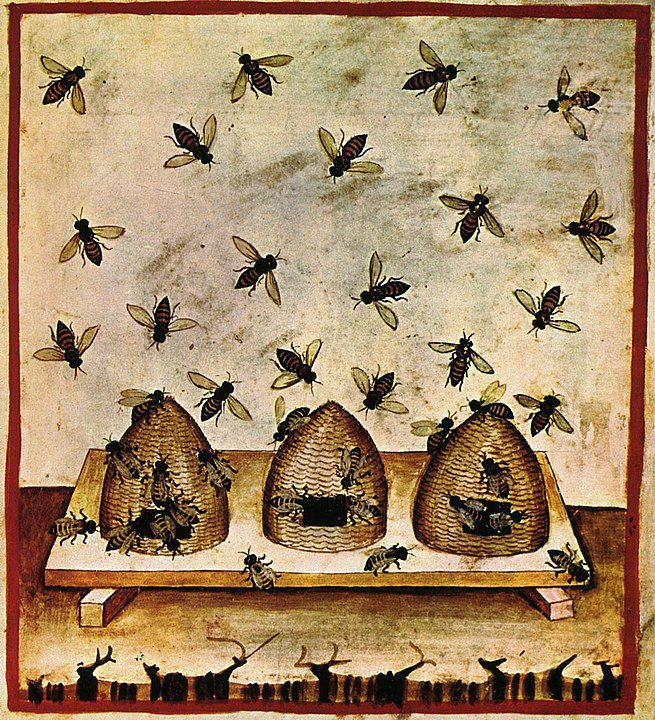
4. Beekeepers used various tools to house hives.
Beehives didn’t used to look as they do nowadays. Today, they tend to be tall wooden boxes that are easy to manage and house thousands of bees at a time.
However, beekeepers used to have to be very creative with where they kept their bee colonies. They would use pottery vessels, hollow logs, and even woven baskets to house the colonies.
5. There are multiple kinds of honeybees.
We tend to generalize the name “honeybee”, but the truth is that there are many different kinds. For honey production, the most commonly used honeybee is Apis mellifera, also known as the European honeybee.
They are supposedly easy to manage thanks to their calm natures and provide ample honey and pollination for the areas around them. While they’re calm, however, it’s still not a good idea to upset a bee – especially not the queen!
6. Honeybee hives are made of various components.
Quality honeybee hives are made of various elements, including a bottom board, hive bodies (or supers), frames, inner and outer covers, and foundations. These different components are essential for shelter, support, and protection for any honeybee colony.
Hives are built to be perennial, which means that while they might shut down during winter, they easily reopen when the weather gets better in spring.
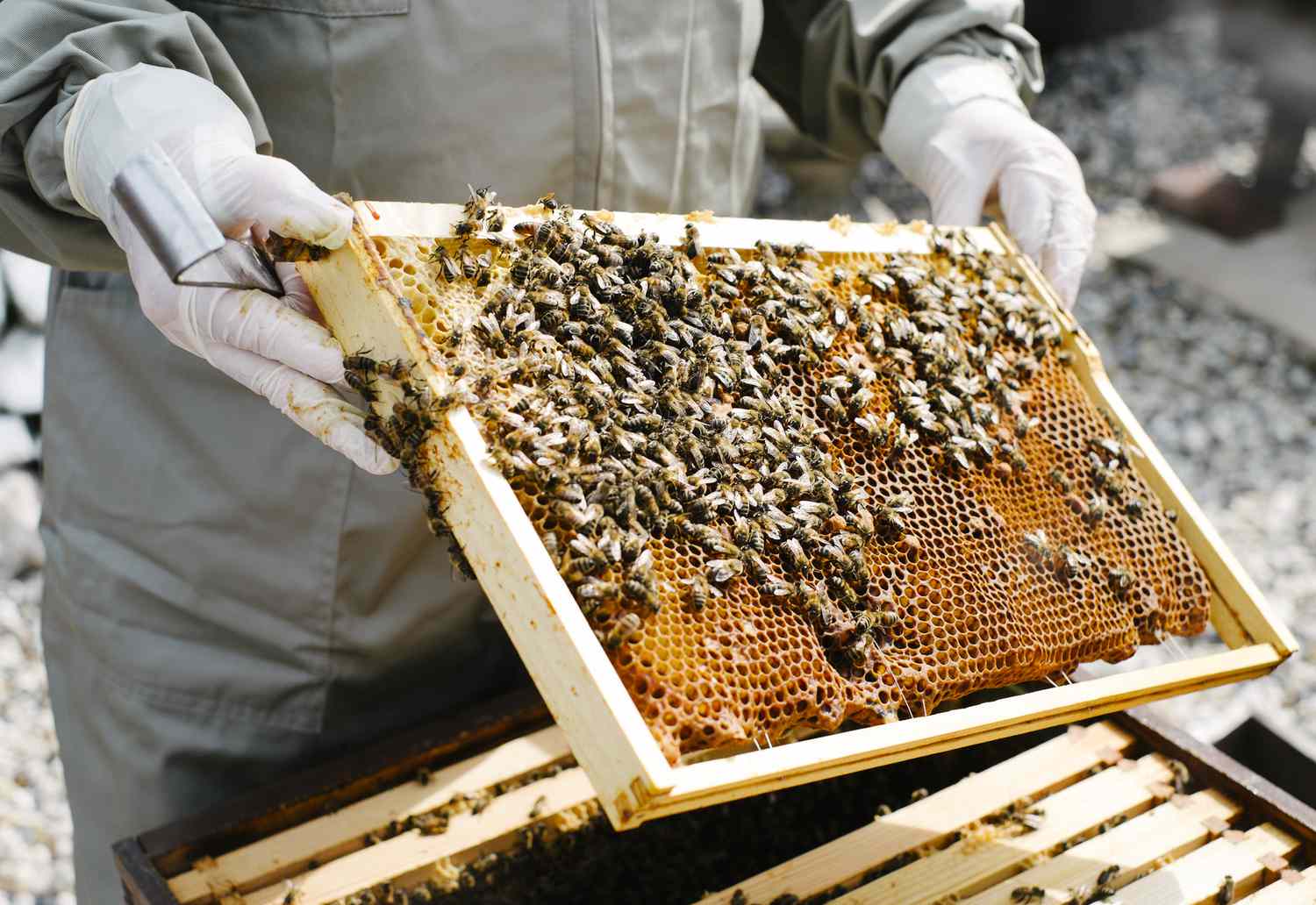
7. Beekeepers do more than just remove honey.
We also tend to think that beekeepers mostly just gather honey from the combs and pot it all up! However, their jobs entail a lot more than just that.
It is essential for them to regularly inspect and manage beehives to ensure the health and productivity of the colony. Monitoring the hives includes checking for pests and diseases, providing supplemental feeding when needed, adding or removing supers, and, of course, harvesting honey.
8. Beekeepers need various tools to protect themselves and their bees.
We have all seen the classic beekeeper outfits, but did you know that they need quite a variety of tools in order to complete their daily tasks?
For example, beekeepers need specialized equipment such as hive tools, smokers, bee veils, and extractors, as well as their bee suits in order to safely and efficiently work with honeybee colonies.
Protective gear helps minimize the risk of bee stings and injuries during hive inspections and honey extraction. It is indeed quite a dangerous job!
9. Honeybees have a fascinating life cycle.
Honeybees undergo complete metamorphosis in their lives, which means they transition through egg, larva, pupa, and adult stages.
The queen bee will lay eggs, which hatch into larvae and then develop into adult bees within the hive. Worker bees perform various tasks, including foraging, nursing brood, and building combs. Generally speaking, worker honeybees live anywhere from five to seven weeks.

10. The queen bee is crucial to any hive.
Every bee colony needs a queen bee. The queen is the only reproductive female in the honeybee colony. She lays eggs, releases pheromones that regulate colony behavior and is essential for a colony to work together and survive cohesion.
The queen’s lifespan can range from one to two years, depending on environmental factors and genetic traits.
11. You can find the queen relatively easily.
As difficult as it may seem to distinguish bees from other bees, finding the queen isn’t actually that difficult.
The queen honeybee usually has a longer, narrower abdomen than the other bees. She will also have a more pointed end than the others, with shorter wings and usually splayed legs. Other worker bees tend to be much more active.
12. The worker bees are always female.
In every honeybee hive, the worker bees are female. Worker bees are sterile females responsible for various tasks within the hive. Their tasks include hunting for nectar and pollen, nursing brood, building up comb, and defending their hive. They make up the majority of the colony and play crucial roles in maintaining hive functions.

13. Male bees, meanwhile, are drones.
Male honeybees are known as drone bees. Their primary role in the hives is to mate with virgin queens during mating flights.
Drones do not collect food or perform other hive duties and are expelled from the hive during periods of resource scarcity or in preparation for winter. Quite a strange society in some ways, but it certainly works for the bees – and for us, too!
14. Honey production is a long process.
As you probably know, honeybees produce honey by collecting nectar from flowers. Then, they convert the nectar into honey through a process of regurgitation and dehydration.
Beekeepers harvest honey by removing frames of capped honeycomb from the hive before extracting the honey using centrifugal force.
It’s thought that during an entire production season, a hive can present up to 60 lbs of pure honey. That sounds like a lot, but given the demand for honey, it can only go so far!
15. Honeybees are vital in agriculture.
Aside from producing honey and wax, honeybees are also crucial for pollination. They help to pollinate many fruit, vegetable, and nut crops and therefore contribute to agricultural productivity and biodiversity.
In fact, beekeepers often rent out their hives to farmers for pollination services, particularly during the flowering season!
16. Hives can become infested.
Sadly, honeybee hives are not impenetrable. In fact, one of their biggest threats is varroa mites. Varroa destructor is a type of parasitic mite that infests honeybee colonies, feeding on the blood of adult bees.
Varroa mites weaken bees, transmit diseases, and can even decimate entire colonies if left untreated! Therefore, they are a significant threat to beekeeping operations worldwide.
17. Beekeepers have to focus on pest control.
As you can imagine, protecting the hives is a trying job. Beekeepers use various strategies to manage pests, diseases, and other threats to hives.
These may include using integrated pest management (IPM) techniques, applying chemical treatments, and promoting strong, resilient colonies through selective breeding and good husbandry practices.
18. Honeybees swarm around, though it’s not always a threatening move.
As you may know, bees are known for occasionally swarming. As threatening as it may seem, swarming is completely natural. In fact, it is a natural reproductive behavior where part of the colony, including the queen, leaves the hive together to establish a new colony elsewhere.
Swarming typically occurs in spring or early summer when hive populations are at their peak and environmental conditions are favorable. So, if you come across a swarm, don’t panic, the bees are just moving!
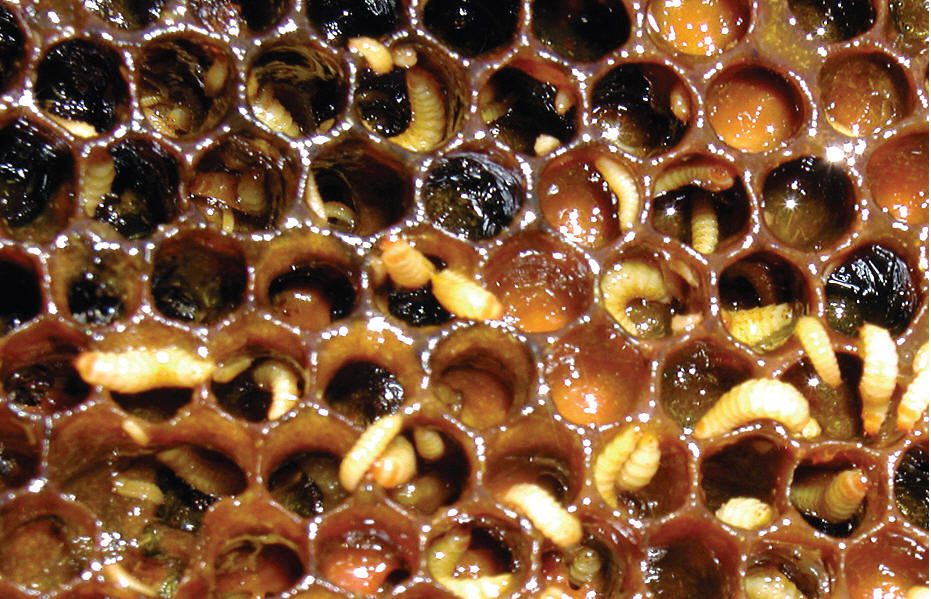
Infested hive
19. Bees are skilled communicators.
Beekeepers and various researchers have come to find that honeybees communicate with one another through a variety of mechanisms.
These include pheromones, dances, and vibrational signals. For example, the waggle dance performed by forager bees conveys information about the location and quality of food sources to other colony members.
However, believe it or not, bees get pretty angry if they’re delivered incorrect information about pollen locations – which is why they have to be so precise!
20. They have a great sense of direction.
As you can imagine, as skilled foragers, honeybees are also great navigators. Their navigational abilities allow them to forage for food sources several miles away from the hive and return with precision.
They rely on visual cues, landmarks, and spatial memory to navigate complex landscapes. They can even communicate directions to nestmates!
21. Bees have to band together in the winter.
As fragile as they may seem, honeybees are strong when they band together. In the harsh winter conditions, honeybees use various strategies to survive together.
These include clustering together to conserve heat, reducing metabolic activity, and consuming stored honey and pollen reserves.
Beekeepers may also provide supplemental feeding and insulation to help colonies survive winter. In fact, they can be crucial in helping the colonies survive.

22. Beekeepers sometimes rear the queens!
Beekeepers occasionally rear queen bees selectively. They do so to maintain or improve desirable traits within their colonies.
Queen rearing involves grafting larvae from high-quality queen cells, raising them in specialized colonies, and introducing mated queens into existing hives or nucleus colonies.
23. Beekeepers use nucleus colonies to support a healthy hive.
Nucleus colonies are essential to beekeepers. Nucleus colonies, or nucs, are small-scale honeybee colonies containing a queen, brood, and worker bees.
Nucs serve various purposes in beekeeping, including queen rearing, as mentioned above! They can also serve for colony expansion and swarm prevention. They are also often used as starter colonies for beginner beekeepers or as temporary holding units during hive management.
24. Propolis can be an essential tool for worker bees.
Propolis is a resin collected by honeybees usually from tree buds, sap flows, and botanical sources. Bees use propolis to seal cracks, reinforce hive structures, and sanitize the interior of a hive by preventing bacterial and fungal growth. Beekeepers may also harvest propolis for medicinal or cosmetic purposes.
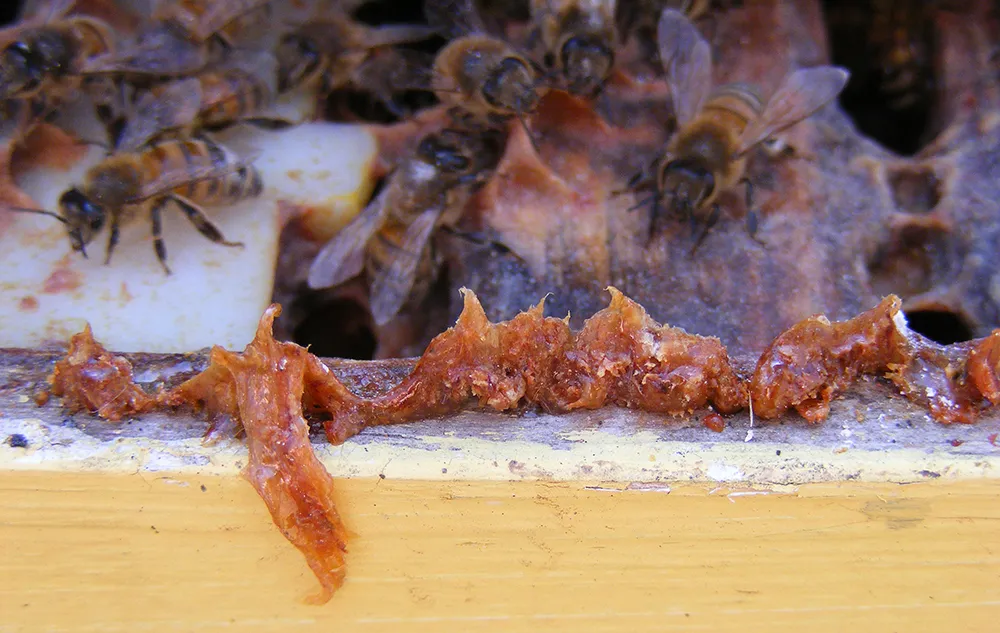
25. Beekeepers love royal jelly!
Royal jelly is a nutrient-rich secretion that’s produced by young workers and fed to queen larvae and developing queen bees.
It contains proteins, vitamins, and hormones that stimulate queen development and enhance fertility. Due to its incredible properties, beekeepers sometimes harvest royal jelly and market it as a dietary supplement or health tonic.
26. Honeybees can produce different kinds of honey, too.
Although we all have a very general idea of what honey looks and tastes like, it actually comes in different varieties.
Honey arrives in a wide range of flavors, colors, and textures, depending on the flowers and plants visited by honeybees. Common honey varieties include wildflower, clover, orange blossom, and buckwheat honey, each with unique tastes and potential uses.
27. Some people use bee venom therapy.
Believe it or not, some people do use bee venom for medicinal purposes! Bee venom therapy, also known as apitherapy, involves the therapeutic use of bee venom to treat various health conditions.
Bee venom is administered through bee stings or specialized bee venom products under controlled conditions by trained practitioners.
However, it is important to note that bee venom therapy can be incredibly dangerous and even cause allergic reactions among other health issues. It’s not something we’d recommend outright, so do consult a doctor or physician if you’re considering it.
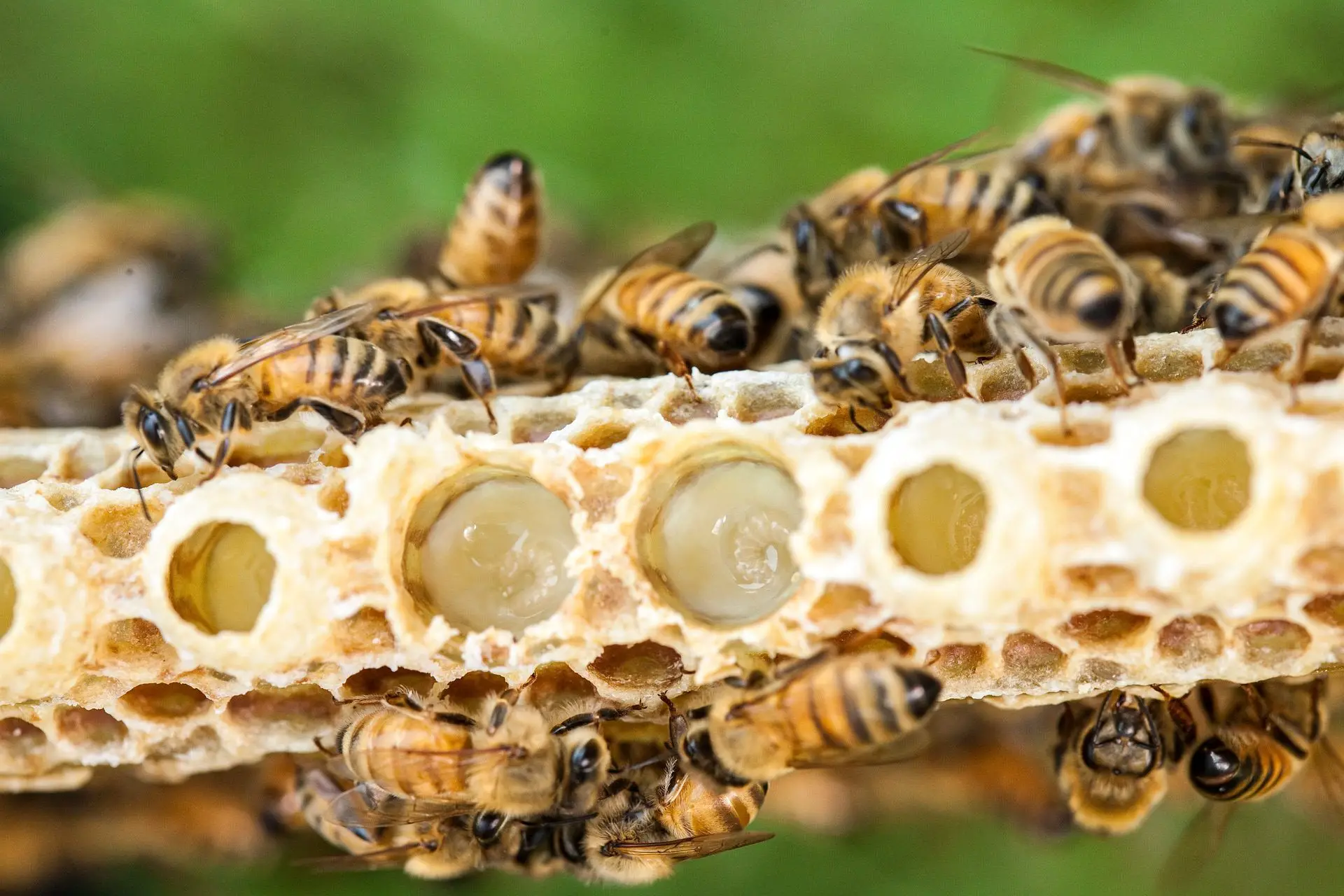
Royal jelly
28. Beekeepers are facing serious pollinator decline.
Honeybees, along with other pollinators face numerous threats, including habitat loss, climate change, and the rise of invasive species.
Declines in pollinator populations can have far-reaching consequences, affecting food security, ecosystem stability, and even biodiversity.
Therefore, ethical beekeepers are becoming essential for helping to manage bee numbers and bee health. Ethical keepers avoid using pesticides or chemicals and therefore take a natural approach to their craft!
29. Certain beekeepers do urban beekeeping.
Due to the growing need for more bees, certain beekeepers are starting their work in the cities! Urban beekeeping has gained popularity in cities worldwide as a means of promoting pollinator health, increasing urban biodiversity, and producing locally sourced honey.
Beekeepers manage hives on rooftops, balconies, community gardens, and urban green spaces, often collaborating with residents, businesses, and local governments.
30. Beekeepers have to follow certain regulations.
Beekeepers do have to follow certain regulations, however, the regulations do vary by area. They may govern aspects such as hive placement, registration, disease management, and pesticide use.
Beekeepers must comply with local ordinances, licensing requirements, and best management practices to ensure responsible and sustainable beekeeping practices.
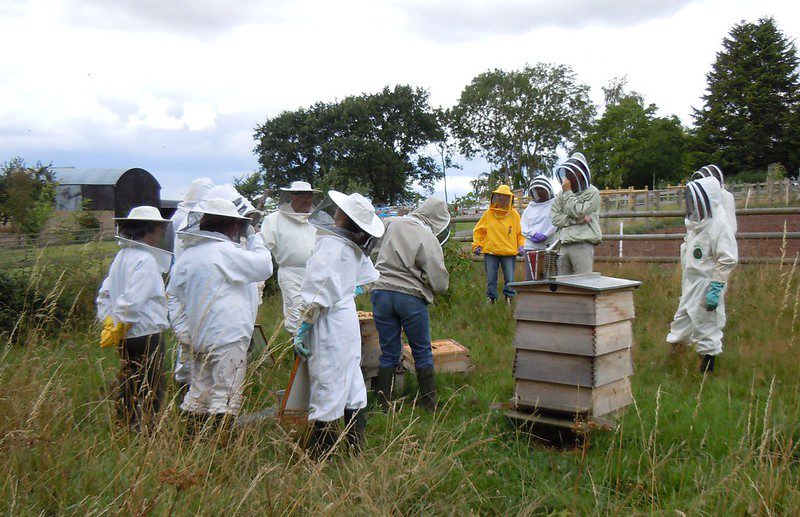
31. Beekeepers are highly educated.
Beekeeping education and outreach programs play a crucial role in promoting beekeeper knowledge and skills. They also help to promote sustainable practices and raise public awareness about the importance of pollinators.
Beekeeping associations, extension services, and educational institutions offer workshops, resources, and full courses for aspiring and experienced beekeepers. Yes, it’s something you can gain an education in!
32. Beekeeping has very positive impacts on communities around the world.
Quality, ethical beekeeping can have incredible positive social and environmental impacts on communities worldwide. It provides opportunities for livelihoods, promotes biodiversity conservation, and even boosts cultural traditions and connections to nature.
Beekeeping also supports social areas such as education, empowerment, and community engagement, inspiring people to advocate on behalf of pollinators and the environments around them.
Of course, it also helps people to better understand and appreciate the wildlife around them, and to remember that even the smallest creatures can have the biggest impacts on their lives!

FAQs About Beekeeping
Is beekeeping high maintenance?
To maintain a healthy and ethical colony, it is important to spend time every day maintaining the colonies. However, bees are pretty independent and can generally do what they need to without too much intervention!
What are beekeepers called?
Beekeepers are also known as honey farmers, apiculturists, and apiarists. However, most people simply call them beekeepers!
Can you eat honey from the hive?
Yes, you can buy and eat raw honey. However, honey, raw or not, is not safe for very young children. It’s probably safest to enjoy it from a jar from your local provider!
Do you know any fun facts about beekeeping? Share them in the comments below!
This page was last modified on April 15, 2024. Suggest an edit









